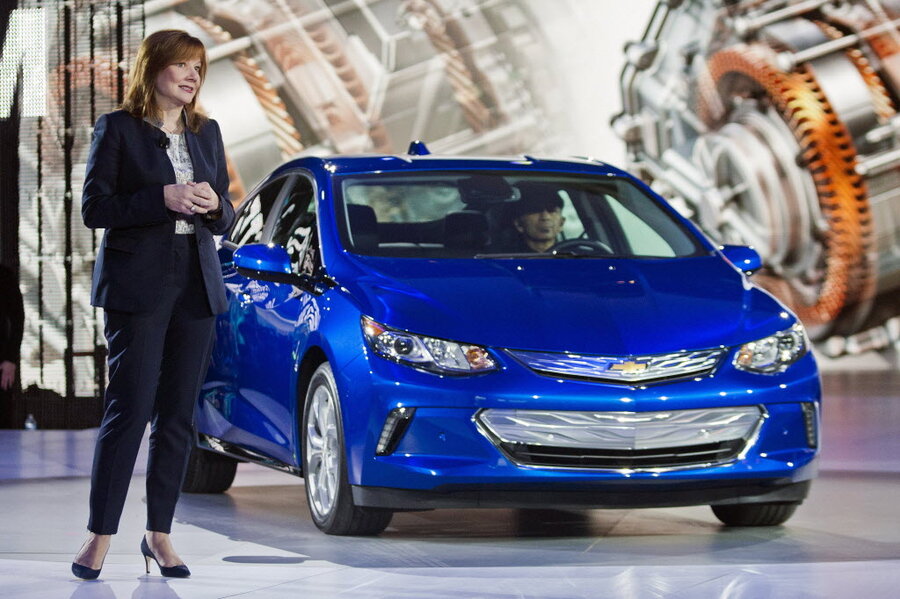Are gasoline cars going extinct?
Loading...
We’ve seen predictions of the death of the automotive industry before; even the death of the car salesman, and, more recently, the death of diesel. To be clear, the automobile isn’t going anywhere – on form and function, it has no rival; and as an instrument and symbol of progress, no single device better combines cutting edge technology with human needs. Rather, the way (and speed) those two inputs conspire to bring about change is the subject of debate.
The world’s best-selling carmaker, Toyota, believes the automobile as we know it – gasoline- and diesel-engine powered – will be largely obsolete by 2050. As such, the company – already the hybrid king – is embracing the future and embarkingon a large-scale greening strategy.
By the end of the decade, Toyota plans to reduce carbon emissions from new vehicles by more than 22 percent compared to its 2010 average. By 2050, it hopes to cut emissions by as much as 90 percent. Toward that aim, Toyota expects to sell 1.5 million hybrid vehicles annually across the globe by year’s end 2020 – or annual growth of about 3 percent. The company will abandon plug-in electric vehicles and instead pursue hydrogen fuel-cell technology. By 2020, Toyota plans to sell 30,000 fuel-cell vehicles per year. Its new Mirai, launched in December 2014, has sold roughly 350 units.
While perhaps not as public – or as optimistic – other companies are positioning themselves for electric-heavy markets in the not too distant future.
Nissan looks to continue its success with battery-electric vehicles as it aims to increase sales to 10 percent of its global total around 2020. Battery-electric sales were 82,602, or just shy of 1 percent in 2014, but a new battery, which should double the range of its popular Leaf model, has the company thinking an electric turning point is on the horizon.
General Motors is also expected to improve the range of its electric fleet before the end of 2016 with the modestly priced Chevrolet Bolt. Moreover, the American automaker has partnered with Korean electronics firm LG Corp to expedite and enhance the development of electric motors and battery cells across its brands. By late 2021, GM expects the partnership to enable reduced energy intensity and industry leading battery cell costs of $100 per kilowatt-hour.
In the wake of its emissions scandal, Volkswagen plans to cut investment spending by $1 billion as it refocuses its brand on high-range, plug-in hybrids and high-volume electric vehicles. Volvo is engineering a similar shift away from diesel.
For luxury buyers, BMW appears ready to continue its loose, but ambitious plan of electrification. By 2020, the automaker hopes to sell 100,000 electric vehicles per year, and, within the next decade or so, convert its entire fleet to electric drivetrains (not necessarily full electric).
For its part, Honda will follow its ‘Green Path’ – a more holistic approach to sustainable production and products.
These widespread movements suggest the alternative vehicle market will be quite competitive in the near future, but companies will be vying for a share of a pie they wish was bigger. The fact is, consumers have been slow to come around to hybrids, EVs, etc, and CAFE standards and tax incentives have failed to manufacture the desired growth.
U.S. auto sales have rebounded since the Great Recession, but, adjusted for population, Americans are buying fewer cars these days – and the cars they’re buying aren’t electric, or even particularly efficient. After four years of steady year-on-year growth, sales of plug-in electrics in 2015 have failed to match or exceed last year’s numbers (European sales look good though). Traditional, gasoline powered cars – midsize, small, and luxury – have also seen sales decline since 2014. Strong auto sales in 2015 have instead been buoyed by significant growth in light-duty truck sales, as well as SUV and cross-over sales.
Low gas prices are the primary culprit for EV’s short-term dip, but insufficient infrastructure, inadequate consumer perception, and simple inconvenience are the greatest inhibitors of the impending boom. As those are sorted – and they will be – gasoline will enjoy what may be its last hurrah.
Source: http://oilprice.com
Original article: http://oilprice.com/Energy/Energy-General/The-Gasoline-Powered-Car-Could-Be-Gone-By-2050.html







